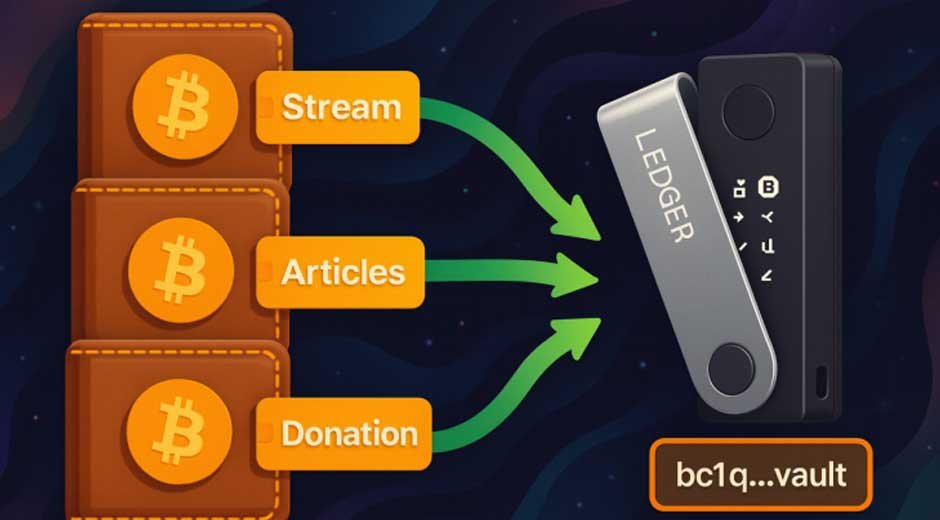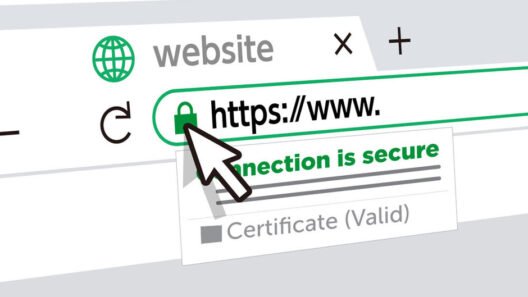If you make things on the internet, you already know how normal payment rails can get in the way. Cards fail for no clear reason. Bank wires stall over the weekend. Platforms clip a fat fee and pay when it suits them. Sometimes you also want to separate your public identity from where your savings sit. Bitcoin gives you a parallel rail that works across borders and odd hours, and it lets you decide how public or private your payment trail should look.
Now the practical question: how do you accept BTC without turning your computer into a science project. Installing heavy apps on every device is a chore, especially if you move between a laptop, a studio PC, and borrowed machines. This is where a browser wallet earns its keep. When you need a payment address you can open at home, in the studio, or on shared gear, a non-custodial web wallet at the right vendor fits with almost no setup while keys stay on your side if you choose carefully, which is the idea behind this plain-English explainer, the simple web wallets for Bitcoin, that many creators read once before wiring anything into their routine.
Why you do not publish your main wallet
Putting your savings address on a donation page looks simple, but it has a nasty side effect. Bitcoin is transparent. Anyone who scans that address can watch every incoming payment and, through common heuristics, make decent guesses about totals and spending patterns. You are not hiding from the world by switching addresses, but you can stop giving away your financial status for free.
The fix is to separate public collection from long-term storage. Keep a small, public-facing wallet for tips and one-off invoices. Move funds out of it on your schedule. Use fresh receive addresses so each event or client has its own on-chain footprint. This is normal hygiene, not cloak and dagger.
Browser wallet, explained without buzzwords
A browser wallet is exactly a Bitcoin wallet that runs in your web browser. The reason it helps is not magic. It cuts friction. You open a page, create or restore a wallet, and you can receive in minutes. No app store. No admin rights on a studio computer. No syncing a full node. Because it is non-custodial, recovery depends on your seed phrase, not a company’s login system.
Tradeoff is responsibility. You must keep the seed offline, verify you are on the real site, and keep your browser clean. That sounds like a lot, but with a few habits it is manageable, and you get a tool that works from any of your devices without installing heavy software.
What “sweep” means, and how it differs from “swap”
People use the word “swap” to mean exchange, which is trading BTC for something else like USDT. That usually happens on an exchange or a swap service, often with KYC that links the trade to you.
“Sweep” is different. Sweeping is a simple send. You move coins you already own from one address to another that you also own.
- Sweep to storage: move funds from the public wallet into a quieter wallet you keep off the radar. The public balance drops, and savings sit in one clean spot.
- Swap to another asset: if you actually need USDT or something else, trade on an exchange or a swap service. That changes the asset and usually adds counterparty records.
Most creators sweep routinely and only swap when they actually want a different asset or fiat.
UTXOs, consolidation, and coin control, simply put
Bitcoin does not keep one rolling balance the way a bank account does. It tracks unspent outputs called UTXOs. Picture each payment you receive as a separate coin in a jar. When you pay someone, the wallet picks which coins to hand over, and if one coin is larger than the bill, you get change to a new address.
- Consolidation means merging many small UTXOs into one big one. It looks tidy, but it can reveal that all those small payments belong to the same owner.
- Coin control is the feature that lets you pick which UTXOs to spend. Use it to avoid mixing “public” coins with “private” coins in a single transaction.
A simple rule helps. Do not consolidate just to make the wallet look neat. Spend the coins that logically belong together. If you must consolidate for fee reasons, do it at a quiet time and keep sources separate.
Legal ways to reduce linkability
You cannot make Bitcoin opaque, but you can avoid handing out a map of your income. These are normal, legal practices that reduce easy clustering.
- Fresh address for each context. New address per client, per article, per stream, per campaign. It gives each activity its own on-chain trail.
- One public wallet, one storage wallet. Accept in the public wallet and sweep to storage on your schedule. Storage is not published anywhere.
- Keep sources separate. Do not co-spend coins from unrelated sources in the same transaction. Use coin control or a wallet that labels UTXOs.
- Avoid change when you can. Paying with an exact-fit UTXO avoids creating a change output that links new addresses to old ones.
- PayJoin where supported. PayJoin (BIP78) mixes inputs from both sides inside one payment, which breaks simple heuristics. It is a normal payment, not a stunt.
- BIP47 Payment Codes when available. You publish one code, but payers generate unique addresses behind the scenes. From the outside it is harder to tie all payments to a single static address.
- Lightning for small donations. LN does not expose a persistent on-chain address for every tip. You can periodically settle channels or swap out to on-chain on your terms.
None of this replaces compliance. If you work with an accountant or receive grants, keep records. The point is to avoid over-sharing by default.
A clean setup you can finish today
- Create a non-custodial web wallet. Write the seed on paper or steel. Write two copies and stash them in different places.
- Set a strong password or passphrase if available. Do not reuse it anywhere.
- Set up two roles: a public wallet for tips and small invoices, and a storage wallet for longer holds. Name them clearly.
- Create at least two receiving addresses in the public wallet. Label them by context, for example Story-Name-Oct or Client-Acme-Deposit.
- Run a round-trip test. Send a small amount in, then send it back out. Nothing beats a real rehearsal.
- Publish a donation line. A small QR on your stream, a tip box under articles, a link in bio to a page with your QR and plain text address.
Why split payments and how to do it well

Splitting is not paranoia. It is good housekeeping in a transparent ledger.
- Less linkability. One address per client or per event stops all income from piling up in a single cluster that is easy to track.
- Cleaner accounting. When you see an address, you know the context. Reconciling amounts and txids becomes trivial.
- Safer public displays. The address you show on a stream does not reveal your full balance. After the event, you retire it.
Practical rules
- Default to a new address for each payer, project, episode, stream, or article. The address lives as long as the context lives.
- Label immediately. Inside the wallet, name each address and keep a short spreadsheet with date, counterparty, address, BTC amount, reference fiat value at receipt, and txid.
- Rotate public addresses on a schedule. One per stream or per campaign. Sweep out and close it when the campaign ends.
- Sanity-check before posting. Send a small test and confirm the address in a block explorer.
What to do with old addresses
- Sweep the balance to storage. That keeps the public wallet light.
- Keep the record. Do not delete old rows. Late payers sometimes show up. Audits happen. You want the paper trail.
Safety that actually matters
- Separate context. Use a clean browser profile or a spare device for wallet actions. Even a cheap laptop dedicated to money tasks helps.
- Offline seed. Paper or steel, two copies, stored apart. Do one recovery test on a blank device so you are not learning under pressure.
- URL discipline. Phishing is common. Bookmark the wallet page and check the certificate. Avoid sponsored results when you are in a rush.
- Fresh addresses. New address per client or campaign keeps books tidy and reduces linkability.
- Keep the browser current and restart it. Skipping updates for months is a classic own goal.
- Start small. Treat a web wallet like a cash drawer. Keep daily balances modest and move larger amounts out.
Fees made simple
Bitcoin fees float with network load. A few habits keep it easy.
- Pick a reasonable fee when you send. Tips and donations can wait. Client payouts often deserve a faster setting and you treat that as a business cost.
- Avoid giant piles of tiny inputs. Ten micro tips are expensive to move in one go. Rotate addresses weekly and sweep once, rather than co-spending everything constantly.
- Price in fiat, settle in BTC. Quote your work in the client’s currency and accept BTC at the rate when funds arrive. This avoids arguments about swings.
Records and taxes without drama
Rules vary, but the basics travel well.
- Keep one spreadsheet with date, counterparty, address, amount in BTC, reference fiat value at receipt, and txid.
- If you convert later, record the conversion date and the fiat amount received. Keep exchange screenshots.
- Talk to an accountant once a year. Ask what counts as income, what counts as capital gain, and what documents to keep.
Where to place payment info so people actually use it
- Your bio needs one clear line under your email that links to a page with the QR and address.
- Put a tidy tip box at the end of posts and videos before comments or related links.
- Invoices and order forms should offer BTC next to bank details with a clean address and a memo field.
Quick checklist for this week
- Set up a non-custodial web wallet and back it up offline.
- Label addresses by client, story, stream, or campaign.
- Add a donation box and publish a QR plus plain text address.
- Do a round-trip test so you know the flow.
- Keep only working balances in the public wallet. Sweep the rest to storage.
- Maintain a simple ledger with dates, amounts, fiat references, and txids.
- Review monthly. Rotate public addresses, update your browser, archive receipts.
Bitcoin does not have to replace your current tools. It sits alongside them and clears payments when geography or timing makes banks fussy. Keep the setup light, write down your routine, and use fresh addresses generously. With a few steady habits you get fewer failed payments and faster closes, which is the whole point.













